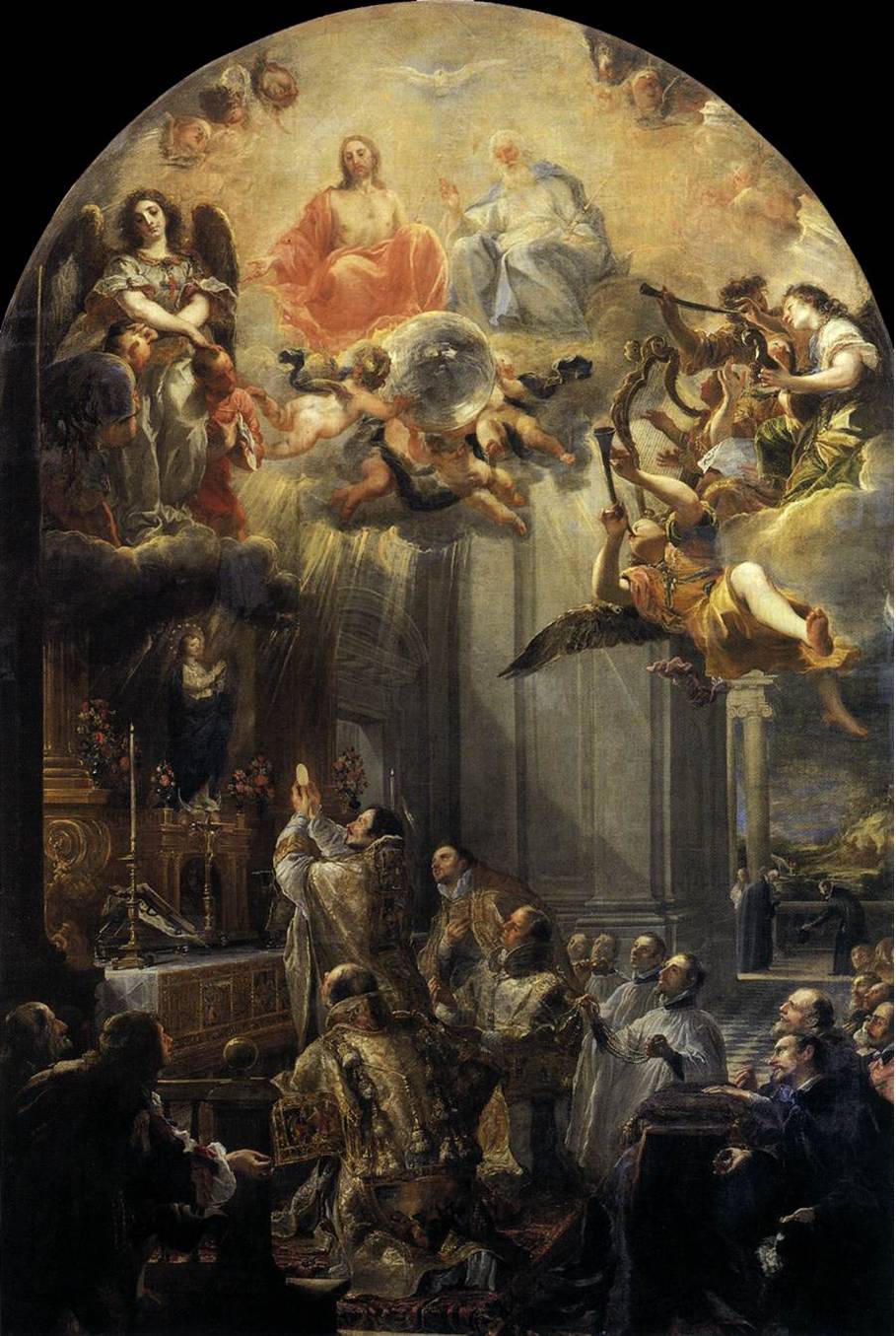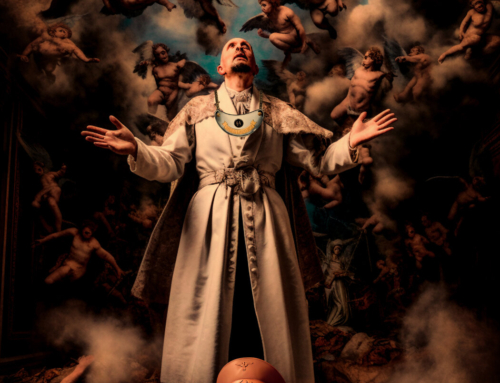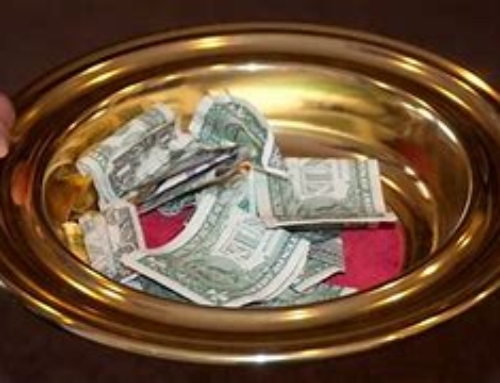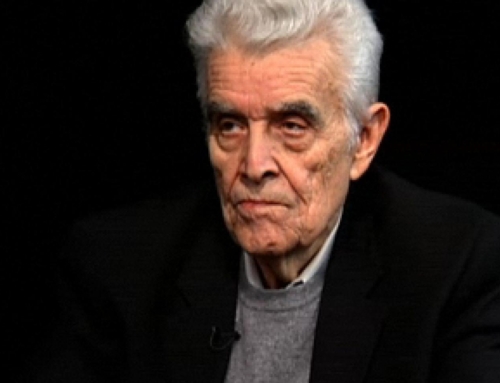A reader has said she doesn’t understand why the Mass is called a sacrifice. I understand. The idea of sacrifice as a religious ritual would have been universal in the ancient world. Today we don’t understand what it means. We might have a foggy idea of animals being slaughtered, or we may have seen that film Apocalypto in which the savages were slaughtering humans at their temple. We don’t get it.
What would the slaughter of humans or animals have to do with worship anyway?
It’s complicated.
Rene Girard outlines one theory of how sacrifice came to be established in primitive cultures. He explains that when there was a crisis in the tribe people naturally looked for someone to blame. They invariably chose the outsider, the oddball, the foreigner, the stupid person or the extraordinarily gifted person. Whoever it was, they shifted the blame on to that person and eventually they killed that troublemaker. When they did this they got a sense of relief on the one hand, but on the other hand, they felt guilty for killing. So a special caste of people called the priests emerged who did the killing and they explained that this process pleased the gods and brought peace. At first humans were sacrificed, but eventually animals were substituted.
This is a plausible theory, and we know that the scapegoat idea was part of the Jewish sacrificial system. (Lev.16) However, the sacrificial system was more complicated than that. In some cultures it would seem that the sacrifices were not simply the scapegoated victim, but also some sort of sacrifice that was offered to the gods to please or propitiate them. This would be something of value to the worshipper–an animal, some of their crops or even their children.
In the world of the Old Testament we know that this must still have been part of the culture because God asked Abraham to sacrifice his son Isaac and it seems that the judge Jepthah (Judges 12) sacrificed his daughter. Then under the Mosaic law God asked for a whole range of different sacrificial offerings to be made.
How Girard’s theory of the scapegoat and the subsequent, complicated sacrificial systems developed is more complicated than I can deal with here. Suffice it to say that the sacrifices were a foreshadowing or pointer to the sacrifice of Christ on the cross. There all the different sacrifices and sacrificial systems were fulfilled and completed.
Jesus takes the blame on himself as the Passover Lamb and the scapegoat. He is sacrificed, but for the first time the sympathy is with the victim, not those doing the ritual murder. Therefore his sacrifice is the sacrifice that ends all sacrifices. The cross is the one, full, final sacrifice, and through his death and resurrection all sacrifices will end.
It is clear that the old sacrificial system has come to an end. I will quote Hebrews 10 at some length to show the teaching of Sacred Scripture on this point:
The law is only a shadow of the good things that are coming—not the realities themselves. For this reason it can never, by the same sacrifices repeated endlessly year after year, make perfect those who draw near to worship. 2 Otherwise, would they not have stopped being offered? For the worshipers would have been cleansed once for all, and would no longer have felt guilty for their sins. 3 But those sacrifices are an annual reminder of sins. 4 It is impossible for the blood of bulls and goats to take away sins.
5 Therefore, when Christ came into the world, he said:
“Sacrifice and offering you did not desire,
but a body you prepared for me;
6 with burnt offerings and sin offerings
you were not pleased.
7 Then I said, ‘Here I am—it is written about me in the scroll—
I have come to do your will, my God.’”[a]8 First he said, “Sacrifices and offerings, burnt offerings and sin offerings you did not desire, nor were you pleased with them”—though they were offered in accordance with the law. 9 Then he said, “Here I am, I have come to do your will.”He sets aside the first to establish the second. 10 And by that will, we have been made holy through the sacrifice of the body of Jesus Christ once for all.
11 Day after day every priest stands and performs his religious duties; again and again he offers the same sacrifices, which can never take away sins. 12 But when this priest had offered for all time one sacrifice for sins, he sat down at the right hand of God, 13 and since that time he waits for his enemies to be made his footstool. 14 For by one sacrifice he has made perfect forever those who are being made holy.
15 The Holy Spirit also testifies to us about this. First he says:
16 “This is the covenant I will make with them
after that time, says the Lord.
I will put my laws in their hearts,
and I will write them on their minds.”[b]17 Then he adds:
“Their sins and lawless acts
I will remember no more.”[c]18 And where these have been forgiven, sacrifice for sin is no longer necessary.
So the old sacrificial system has ended. As the catechism puts it:
613: Christ’s death is both the Paschal sacrifice that accomplishes the definitive redemption of men, through “the Lamb of God, who takes away the sin of the world”,439 and the sacrifice of the New Covenant, which restores man to communion with God by reconciling him to God through the “blood of the covenant, which was poured out for many for the forgiveness of sins”.440 This sacrifice of Christ is unique; it completes and surpasses all other sacrifices.4
The fact that we find a sacrificial system difficult to understand shows the success of this enterprise. Sacrifices really have come to an end. We don’t need to do that anymore.
So why then do we call the Mass “a sacrifice”? It is not because it is a sacrifice as understood under the old dispensation. Sacrifices have ended. Instead it is what the church calls a re-presentation of what Christ did on the cross. Every Mass and the whole liturgical cycle of the church is a constant reminder that Christ was sacrificed to end the old cycle of sacrifice.
There is more. The Jews have a theological idea called anamnesis. This is a technical term for a certain type of remembering. It is a remembrance that is not just a sentimental memory of a past event, but a dynamic, ritualistic re-enactment of an event which brings the event into the present moment and brings the participants into the event that happened once in the past. If you like it is liturgical time travel! This is why Jesus says, “Do this in remembrance of me” and why the church calls for “full participation” in the Mass.
Again, the catechism explains this clearly and simply:
The Eucharist is the memorial of Christ’s Passover, the making present and the sacramental offering of his unique sacrifice, in the liturgy of the Church which is his Body. In all the Eucharistic Prayers we find after the words of institution a prayer called the anamnesis or memorial.
1363 In the sense of Sacred Scripture the memorial is not merely the recollection of past events but the proclamation of the mighty works wrought by God for men.184 In the liturgical celebration of these events, they become in a certain way present and real. This is how Israel understands its liberation from Egypt: every time Passover is celebrated, the Exodus events are made present to the memory of believers so that they may conform their lives to them.
1364 In the New Testament, the memorial takes on new meaning. When the Church celebrates the Eucharist, she commemorates Christ’s Passover, and it is made present the sacrifice Christ offered once for all on the cross remains ever present.185 “As often as the sacrifice of the Cross by which ‘Christ our Pasch has been sacrificed’ is celebrated on the altar, the work of our redemption is carried out.”186
1365 Because it is the memorial of Christ’s Passover, the Eucharist is also a sacrifice. The sacrificial character of the Eucharist is manifested in the very words of institution: “This is my body which is given for you” and “This cup which is poured out for you is the New Covenant in my blood.”187 In the Eucharist Christ gives us the very body which he gave up for us on the cross, the very blood which he “poured out for many for the forgiveness of sins.”188
1366 The Eucharist is thus a sacrifice because it re-presents (makes present) the sacrifice of the cross, because it is its memorial and because it applies its fruit:
- [Christ], our Lord and God, was once and for all to offer himself to God the Father by his death on the altar of the cross, to accomplish there an everlasting redemption. But because his priesthood was not to end with his death, at the Last Supper “on the night when he was betrayed,” [he wanted] to leave to his beloved spouse the Church a visible sacrifice (as the nature of man demands) by which the bloody sacrifice which he was to accomplish once for all on the cross would be re-presented, its memory perpetuated until the end of the world, and its salutary power be applied to the forgiveness of the sins we daily commit.189
1367 The sacrifice of Christ and the sacrifice of the Eucharist are one single sacrifice: “The victim is one and the same: the same now offers through the ministry of priests, who then offered himself on the cross; only the manner of offering is different.” “And since in this divine sacrifice which is celebrated in the Mass, the same Christ who offered himself once in a bloody manner on the altar of the cross is contained and is offered in an unbloody manner. . . this sacrifice is truly propitiatory.”1
The Mass is therefore a real sacrifice, but understood in this new sense. Christ is not offered over and over again. That is not the teaching of the church. Instead his once for all sacrifice is made present and real through the sacrifice of the Mass.
This is also why the other important term for the Mass is The Eucharist. “Eucharist” means “Thanksgiving” and what we are thanking God for is not just a shopping list of all our blessings, but at the very heart of it all a profound, ritualistic act of Thanksgiving for the ending of the sacrificial system and our own redemption and the redemption of the world.
It is no mistake that one of the sacrifices God commanded the Jews to do in the wilderness was a Thank Offering. This was as a special sacrifice to offer thanks to God. The beautiful connection is that the Thank Offering in the Old Testament was an offering of bread!
This was a pointer to the Eucharist. The other offerings of the Lamb of God were made for sin, but the Thank Offering was made for Thanks, and the two come together in the Eucharist where the priest holds up the bread and says, “Behold the Lamb of God” All of these beautiful truths come together as we call the Mass “A sacrifice.”
Finally, the Sacred Scriptures talk about offering a “sacrifice of praise” and St Paul says, “I beseech you, present yourselves, your souls and your bodies as a living sacrifice.” Instead of killing a human a human becomes fully alive as a living sacrifice to God. How is this possible?
Only through the inflowing and infilling power of the Resurrection….
….but maybe I should leave that one for Easter Day.







I’m reminded of the prophecy of Malachi: 11 For from the rising of the sun even to the going down, my name is great among the Gentiles, and in every place there is sacrifice, and there is offered to my name a clean oblation: for my name is great among the Gentiles, saith the Lord of hosts.
[…] Catholic Register Striving Towards Heaven? Try Jesus’ 8 Step Program – Chloe Langr, epicPew Why Do We Call the Mass a “Sacrifice”? – Fr. Dwight Longenecker 5 Alternatives to the Girl Scouts for Young Catholic Women – […]
[…] of praise”. Many of them have reported back that the prayer is helping their faith and participation at […]